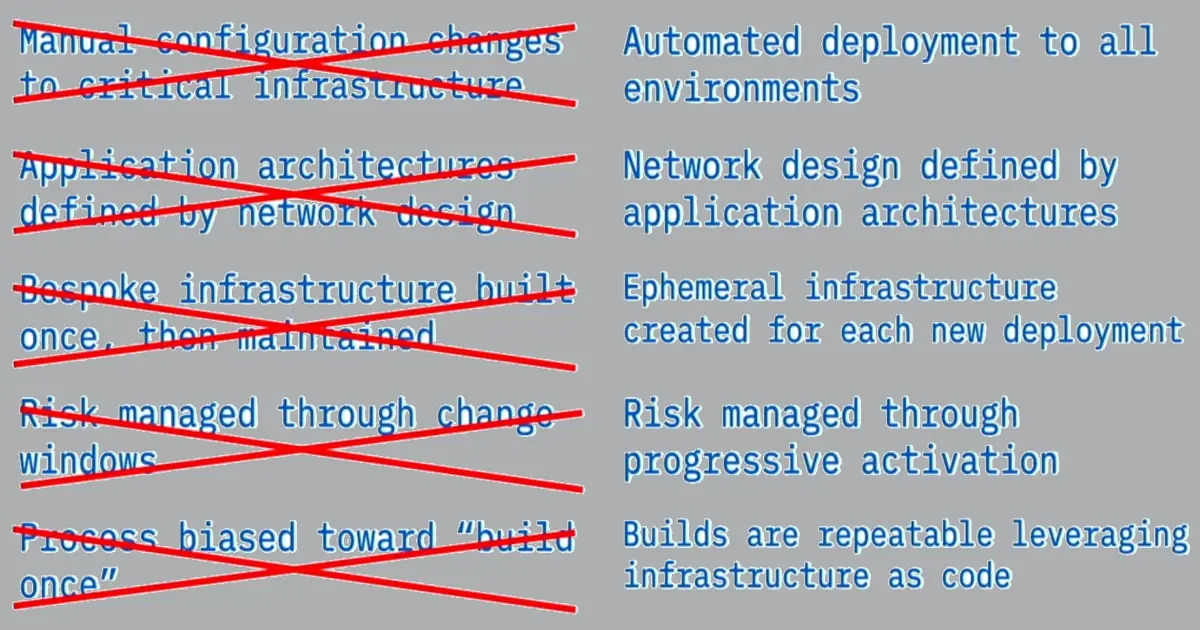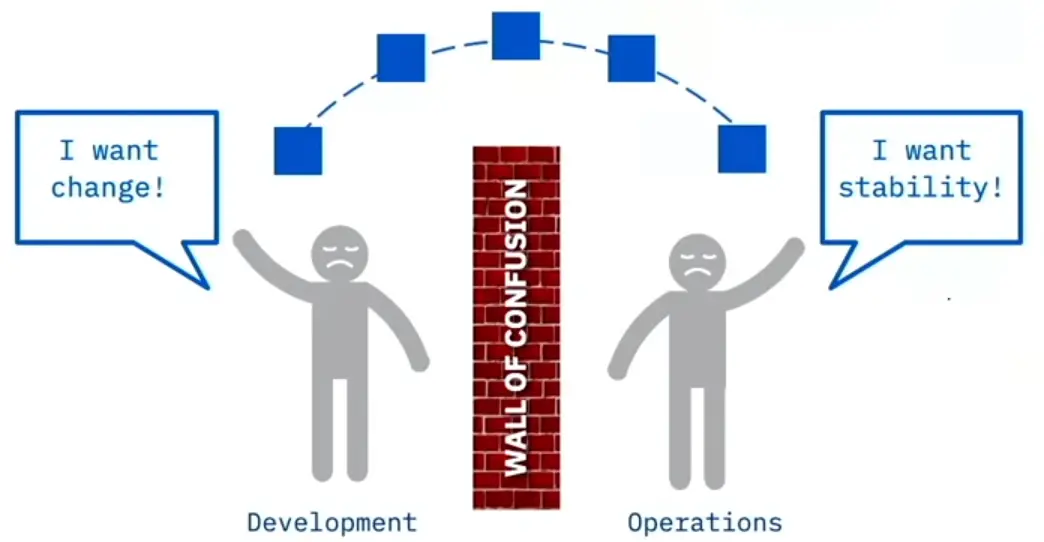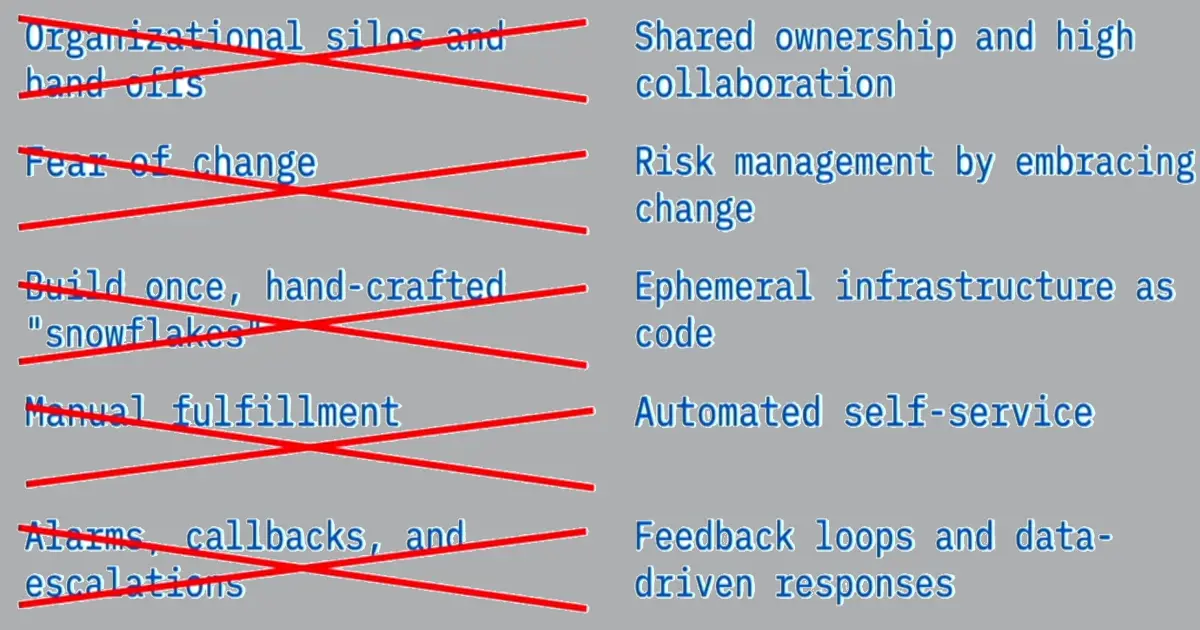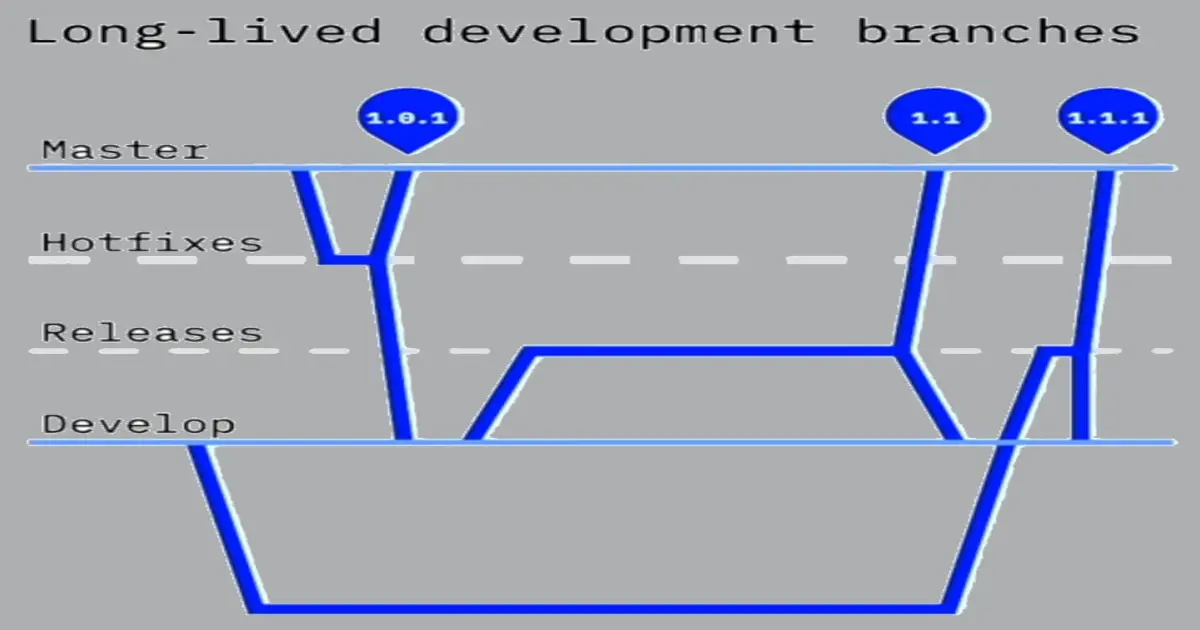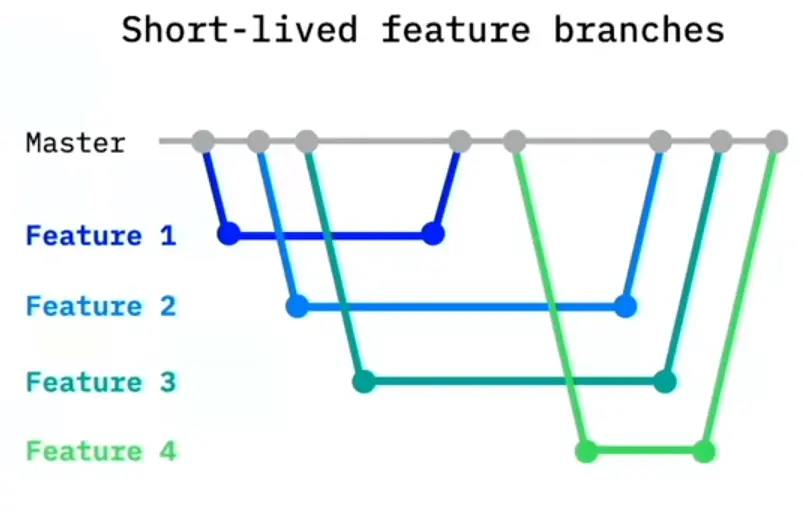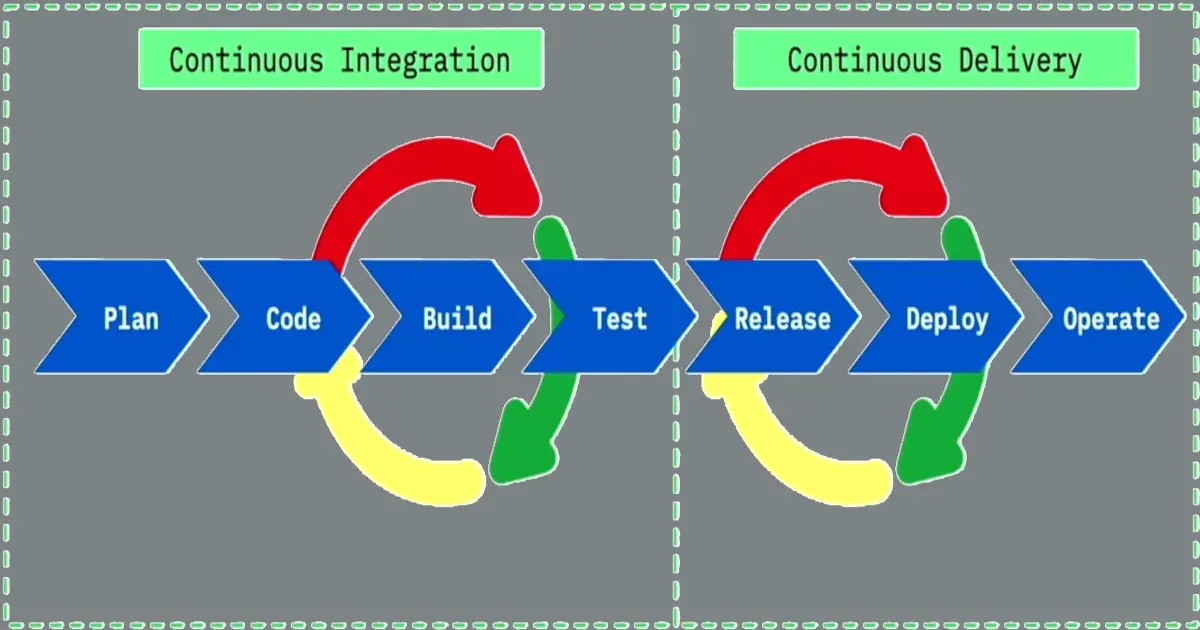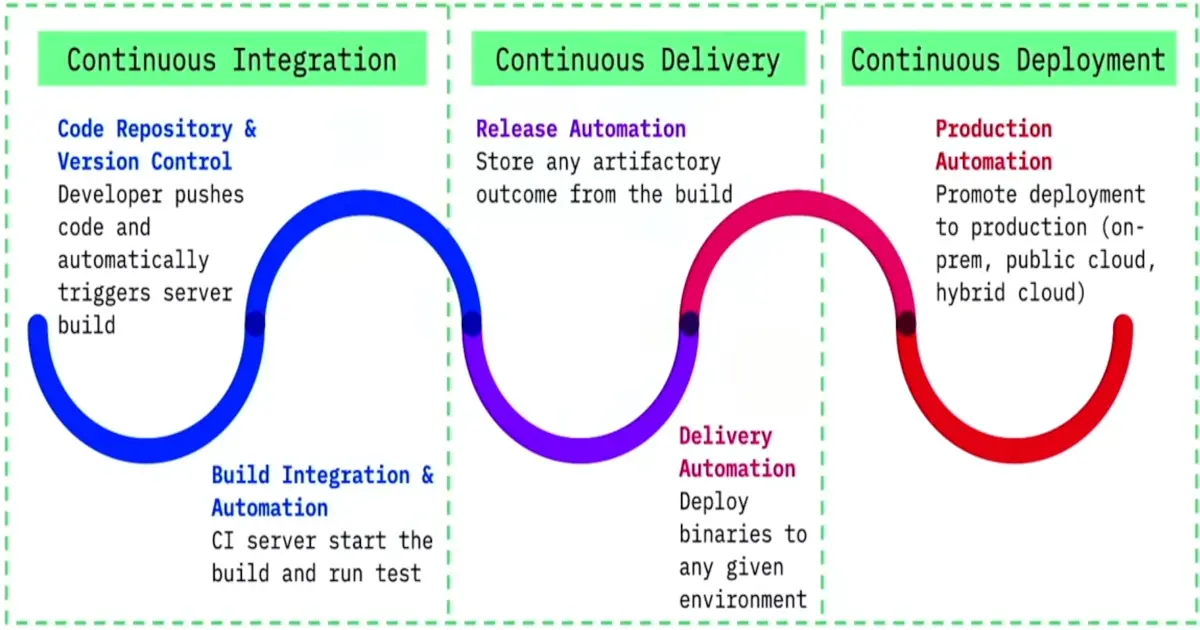Working DevOps
Taylorism and Working in Silos
Working DevOps:
-
Culture of teaming and collaboration
-
Agile development as a shared discipline
-
Automate relentlessly
-
Push smaller releases faster
Taylorism:
-
Adoption of command and control management
-
Organizations divided into functional silos
-
Decision-making is separated from work
Impact of Taylorism on IT:
Software development is bespoke:
-
Software development is NOT like assembling automobiles
-
Most of the parts don’t exist, yet
-
Software development is craft work
-
Taylorism is not appropriate for craft work
Abandon Command and Control:
-
Command and control is not Agile
-
Stop working in silos
-
Let your people amaze you
Software Engineering vs. Civil Engineering
Software engineering is organic:
-
Software stack is constantly updated
-
New features are being added
-
System behavior changes over time
-
Yet we treat software engineering like a civil engineering project
The project model is flawed:
-
The project model doesn’t work for software development
-
Treat software development like product development
-
Encourage ownership and understanding
-
Software engineering is not civil engineering
-
Maintain stable, lasting teams
Required DevOps Behaviors
Diametrically opposed views:
- Enterprises see “new” as complex and time-consuming
- DevOps delivers a continual series of small changes
- These cannot survive traditional overheads
A clash of work culture:
The no-win scenario:
- Development wants innovation
- Operations wants stability
Operations view of development:
-
Development teams throw dead cats over the wall
-
Manually implemented changes
-
Lack of back-out plans
-
Lack of testing
-
Environments that don’t look like production
Development view of operations:
-
All-or-nothing changes
-
Change windows in the dead of night
-
Implemented by people furthest away from the application
-
Ops just cuts and pastes from “runbooks”
No-win scenario:
-
If the website works, the developers get the praise!
-
If the website is down, operations gets the blame!
Required DevOps behaviors:
Infrastructure as Code
-
Described an executable textual format
-
Configure using that description
-
Configuration Management Systems to make this possible (Ansible, puppet etc.)
-
Never perform configurations manually
-
Use version control
Ephemeral immutable infrastructure:
-
Server drift is a major source of failure
-
Servers are cattle not pets
-
Infrastructure is transient
-
Build through parallel infrastructure
Immutable delivery via containers:
-
Applications are packaged in containers
-
Same container that runs in production can be run locally
-
Dependencies are contained
-
No variance limits side effects
-
Rolling updates with immediate roll-back
Immutable way of working:
-
You never make changes to a running container
-
You make changes to the image
-
Then redeploy a new container
-
Keep images up-to-date
Continuous Integration (CI)
CI vs. CD:
- CI/CD is not one thing
- Continuous Integration (CI):
- Continuously building, testing, and merging to master
- Continuous Delivery (CD):
-
Continuously deploying to a production-like environment
Traditional Development:
-
- Devs work in long-lived development branches
- Branches are periodically merged into a release
- Builds are run periodically
- Devs continue to add to the development branch
Continuous Integration
- Devs integrate code often
- Devs work in short-lived feature branches
- Each check-in is verified by an automated build
Changes are kept small:
-
Working in small batches
-
Committing regularly
-
Using pull requests
-
Committing all changes daily
CI automation:
-
Build and test every pull request
-
Use CI tools that monitor version control
-
Test should run after each build
-
Never merge a PR with failing tests
Benefits of CI:
-
Faster reaction times to changes
-
Reduced code integration risk
-
Higher code quality
-
The code in version control works
-
Master branch is always deployable
Continuous Delivery
“Continuous Delivery is a software development discipline where you build software in such a way that the software can be released to production at any time.” — Martin Fowler
Release to production at any time:
- The master branch should always be ready to deploy
- You need a way to know if something will “break the build”
- Deliver every change to a production-like environment
CI/CD pipeline:
- Automated gates that create a pipeline of checks:
- Unit testing
- Code quality checks
- Integration testing
- Security testing
- Vulnerability scanning
- Package signing
A CI/CD pipeline needs:
- A code repository
- A build server
- An integration server
- An artifact repository
- Automatic configuration and deployment
Continuous integration and delivery:
Five key principles:
- Build quality in
- Work in small batches
- Computers perform repetitive tasks, people solve problems
- Relentlessly pursue continuous improvement
- Everyone is responsible
CI/CD + Continuous deployment:
How DevOps manages risk:
- Deployment is king
- Deployment is decoupled from activation
- Deployment is not “one size fits all”

